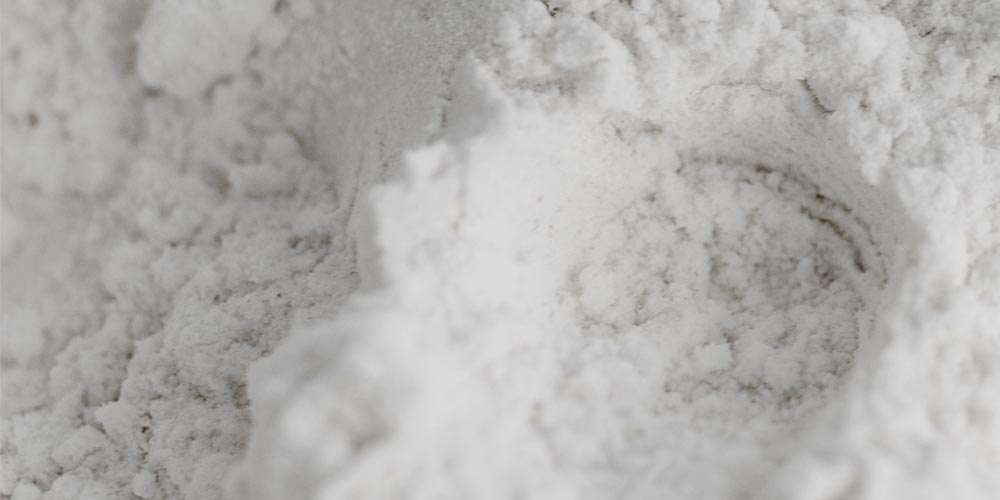Bentonite processing technology
Bentonite is a clay rock with montmorillonite as the main mineral component. It often contains a small amount of illite, kaolin, zeolite, feldspar, calcite and other minerals. Bentonite is a precious non-metallic mineral resource with more than 1,000 uses and is known as the “universal material”. Bentonite can be divided into calcium-based, sodium-based, magnesium-based, sodium-calcium-based, and magnesium-sodium-based according to the different cations between the montmorillonite layers.
Bentonite is generally white, gray, pink, yellow, brown and black in various colors, and its shape is often earthy cryptocrystalline mass, sometimes in the form of small scales and spherulites. Soft and slippery, water swelling, the maximum water absorption can be 8-15 times its volume, with grease or waxy luster, the fracture is conchoidal or jagged, the hardness is 2 to 2.5; the density is 2 to 2.7g/cm3, Melting point is 1330~1430℃. Bentonite has the properties of swelling, adsorption, suspension, dispersibility, cation exchange, stability, thixotropy, non-toxicity, and cohesiveness.

Universal clay can be used as a binder, adsorbent, absorbent, filler, catalyst, alteration agent, flocculant, detergent, stabilizer, thickener, and is widely used in iron ore pellets, casting, drilling, Petroleum, chemical, textile, paper, rubber, agriculture, medicine and other industries. With the development of science and technology, the consumption of bentonite has been extended from the traditional drilling mud and iron ore pellet casting industries to petrochemical, light industry, agriculture, environmental protection, construction and other fields, which puts forward a higher level of processing technology. Require.
Bentonite processing technology-purification
The purification methods of bentonite include chemical purification and physical purification. Physical purification is divided into hand selection, air selection (dry purification), and water selection (wet purification).
- Hand-selected
It is mainly used in the raw soil with high content of montmorillonite, bentonite raw ore → crushing → drying → hand selection → grinding → packaging.
- Dry purification / winnowing
Suitable for ore with high content of montmorillonite (greater than 80%), finer grain size and coarser gangue mineral quartz, feldspar, bentonite ore → natural drying → crushing → air drying → grinding → air separation and classification → packaging
- Wet purification/water selection
It is suitable for low-grade bentonite containing 30%-80% of montmorillonite content in raw ore, or bentonite containing feldspar and quartz with finer particle size, bentonite raw ore → crushing → pulping (adding dispersant) → sedimentation and separation → Centrifugal separation of the suspension (adding flocculant) → filtration → drying → disintegration and depolymerization → packaging.
- Chemical purification
The method of using chemical reagents to chemically react with the impurity minerals in bentonite to remove them, usually using strong alkali to remove cristobalite and quartz, the reaction principle is: 2NaOH + SiO2 = NaSiO3 + H2O.
- Compound purification
In the actual purification process, physical and chemical methods are often used for composite purification. Raw ore → surface treatment of minerals with hyposulfite or sodium dithionite → treatment of bentonite with alkali at a temperature greater than 60°C → flushing with dehydration water at least once → renew Configure suspension → homogenizer treatment → drying → crushing → packaging and transportation.
Bentonite processing technology-modification
The surface modification of bentonite is to use physical, chemical, mechanical and other methods to change the surface structure, surface energy, electrical properties, adsorption performance and reactivity of bentonite, so as to improve the use value of bentonite.
- Mechanical activation
Mechanical force vitality is the process of using mechanical force to improve certain activities and properties of bentonite, including ultrafine pulverization and extrusion.
Ultra-fine crushing: The strength of the effect is related to the crushing time, the type of crushing equipment, the way of mechanical force, and the crushing environment.
Squeezing effect: stripping effect, temperature effect, bond breaking effect.
- Thermal activation
What factors are related to the degree of thermal activation?
It is related to the sintering time: generally, the sintering time is 1 hour.
It is related to the roasting temperature: the roasting temperature is 400-450 degrees Celsius to achieve the purpose of activation.
Comparative data of specific surface area of bentonite before and after roasting
| Adsorbent | Natural bentonite | 400℃ calcined soil | 450℃ calcined soil | 600℃ roasting soil | 700℃ calcined soil |
| Specific surface area (m2/g) | 310 | 360 | 370 | 86 | 40 |
- Acid activation
Bentonite acid activation is the use of various acids (sulfuric acid, nitric acid, hydrochloric acid, oxalic acid) to activate bentonite under certain conditions with different concentrations.
- Organic activation
Wet process: raw ore crushing→dispersed pulping→purification→modification→covering→filtering→drying→crushing→product packaging
Pre-gel method: raw ore crushing → dispersion pulping → modification and purification → water extraction → heating to remove water → pre-gel product
Dry process: purified pin montmorillonite + covering agent → heating and mixing → extrusion → drying → crushing → packaging
Bentonite processing technology-sodium modification
Compared with calcium bentonite, sodium bentonite has higher water absorption and thermal stability, stronger plasticity and cohesiveness, and better colloidal suspension thixotropy and lubricity. Therefore, the sodium modification of calcium-based pot run soil is one of the effective ways to improve its application value and economic value.
- Sodiumization principle
The sodiumization of bentonite is mainly to use Na+ to replace the replaceable cation Ca2+ or Mg2+ between the bentonite crystal layers. The reaction formula is as follows: Ca2+ – montmorillonite + 2Na+=2Na* – montmorillonite + Ca2+
- Sodiumization method
Sodiumization modification mainly includes suspension method (wet method), yard sodiumization method (ageing method) and extrusion method, etc. Raw materials → hand selection → crushing → purification → sodiumization → extrusion → drying → grinding → packaging
After more than 100 years of research and application, bentonite and its deeply developed products have played an important role in the fields of industrial and agricultural production and science. In the future, research on the effective utilization of bentonite should be strengthened, and high-quality, refined and cutting-edge products of bentonite should be vigorously developed, and the development towards the direction of large-scale production and serialization of products.
Article source: China Powder Network
